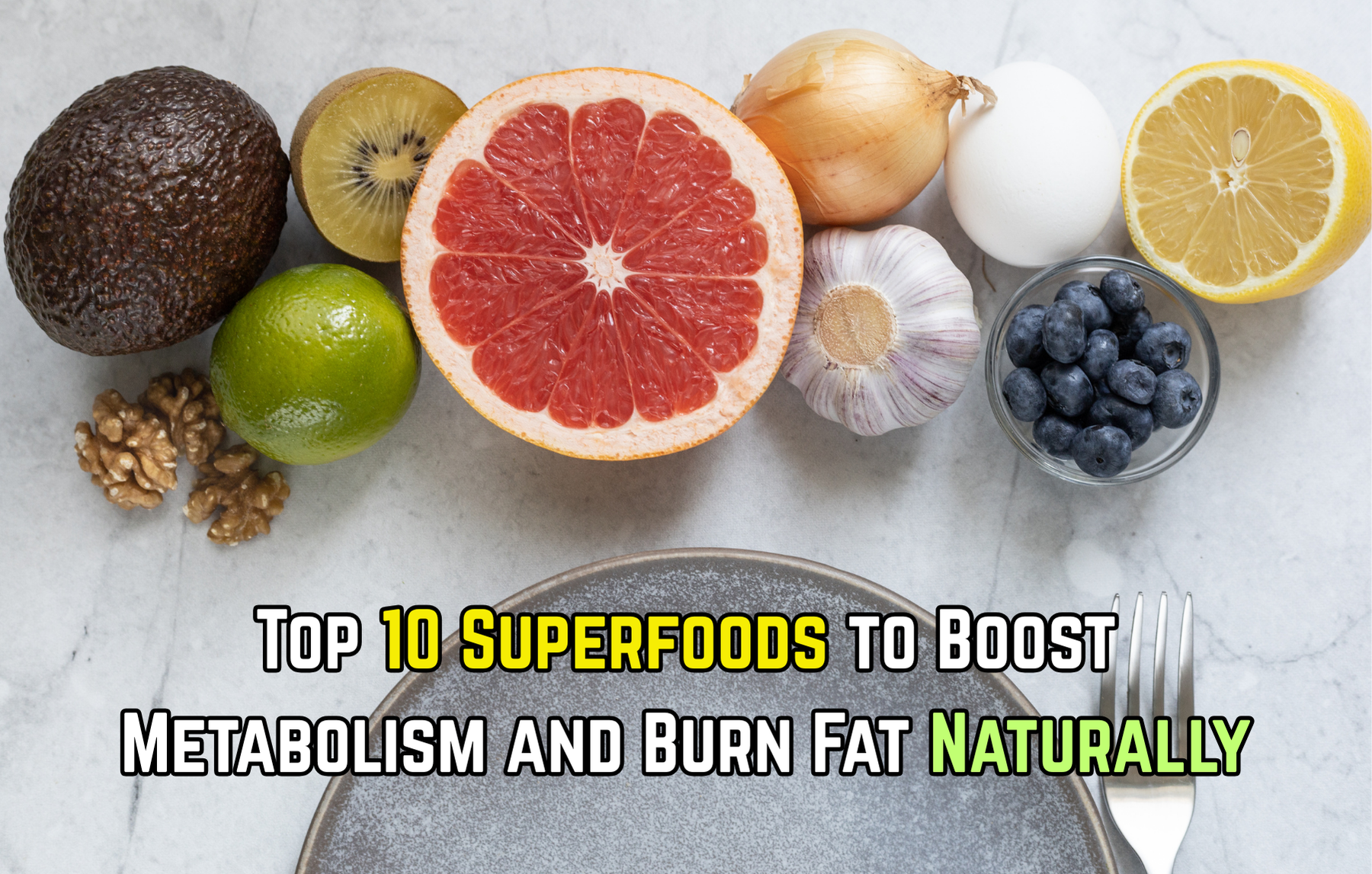When we speak of “increasing metabolism” or “fat burning,” it always seems like something mystical. But metabolism itself is the mechanism with the aid of which all types of chemical reactions in our our bodies pass on—how a great deal power is spent, how much is going to devour meals, how an awful lot electricity is spent with exercising, and how the frame offers with temperature or meals adjustments.
Some meals have substances which could subtly increase electricity expenditure, beautify insulin sensitivity, decrease infection, or have an effect on the bacterial network of the gut—all of that could slightly enhance our metabolism.
But one thing to note: No “superfood” will be effective if you are regularly taking in excess calories. They are only beneficial, not magic spells. And everyone’s body responds differently (genes, gut health, health, medications, etc., also come into play).
Following are 10 food/food groups that have scientific or strong evidence to suggest that they help in metabolism and burning fat. I shall also provide new studies and cautionary remarks.
1. Green Tea (Particularly Matcha: Powdered Form)
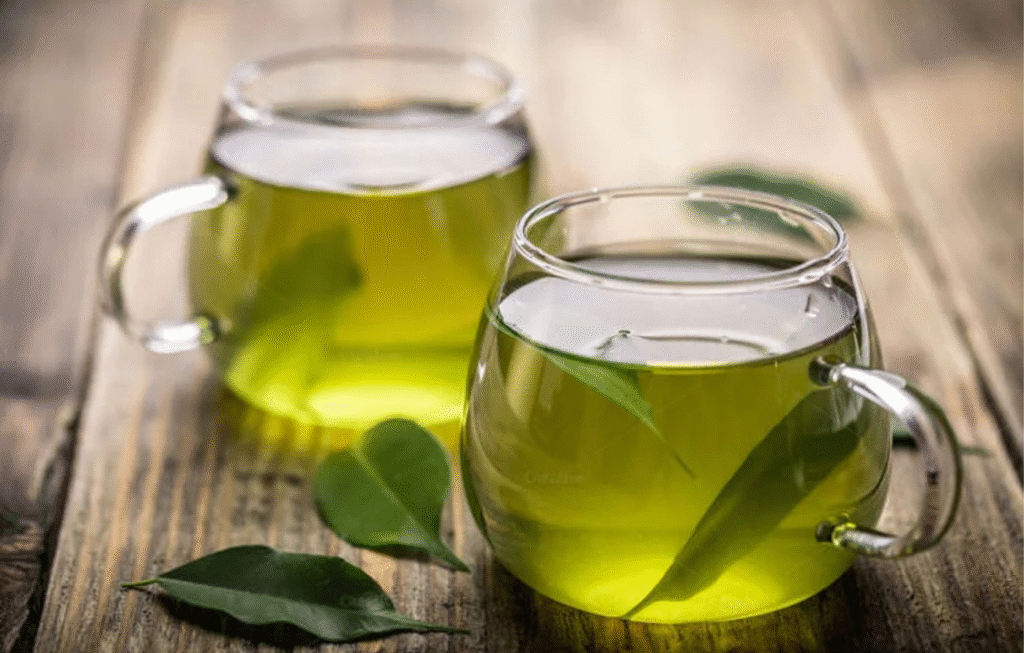
Green tea has caffeine and a completely unique type of polyphenols (catechins, EGCG in particular). These substances had been shown to barely boost up metabolism and enhance the burning of fat for energy. A few meta-analyses indicate that the intake of green tea or extracts could raise the daily expenditure of energy by about 3–4%.
Nonetheless, recent review warns that such effects are negligible, and it is doubtful that the drink alone will “burn” fat. Nevertheless, taking green tea in combination with exercise might add to fat burning to a slight degree.
Consume using matcha (green tea powder) can deliver more catechins. You will have 2–3 cups every day of green tea or mix it into smoothies, lattes, or baking mixes (do no longer upload sugar or cream). But in case you are caffeine-sensitive, don’t take it at night.
2. Chili/capsaicin-containing spices
The active compound in chili peppers is capsaicin. This is a thermogenic, heat-producing compound—i.e., it may motive a mild upward push in frame temperature, so that you can make you burn slightly more energy. Capasaicin has also been demonstrated by some research to mildly reduce hunger.
You can use green chilies, red chilies, black pepper powder, or Japanese chili powder on your food. But these calorie-burning effects will not be effective and will last for a short time. If you have a sensitive stomach or digestive system, spicy spices can irritate it.
3. Turmeric (Curcumin)
The active ingredient in turmeric, curcumin , has the ability to increase anti -inflammatory activity, insulin sensitivity and other metabolic effects of regulation. Some human research indicates that daily turmeric/curcumin can lead to a small weight, body mass index (BMI) or a reduction in the baker period. Such may be particularly useful in individuals with mild chronic inflammation, as inflammation retards metabolism.
But curcumin is low in bioavailability—not so without problems absorbed with the aid of the body. So it is often great enthusiastic about Piperine and a small amount of healthy fat (e.G., olive oil). You can blend it into vegetables, pulses, soups, smoothies, or “golden milk” (turmeric milk alternative black pepper fat). If you’re deliberating consuming high amounts of the supplement, make certain to talk to a fitness professional concerning drug interactions and other benefits to health.
4. Berries/Anthocyanin-Dense Fruits (such as blueberries, strawberries, raspberries, elderberries, etc.)
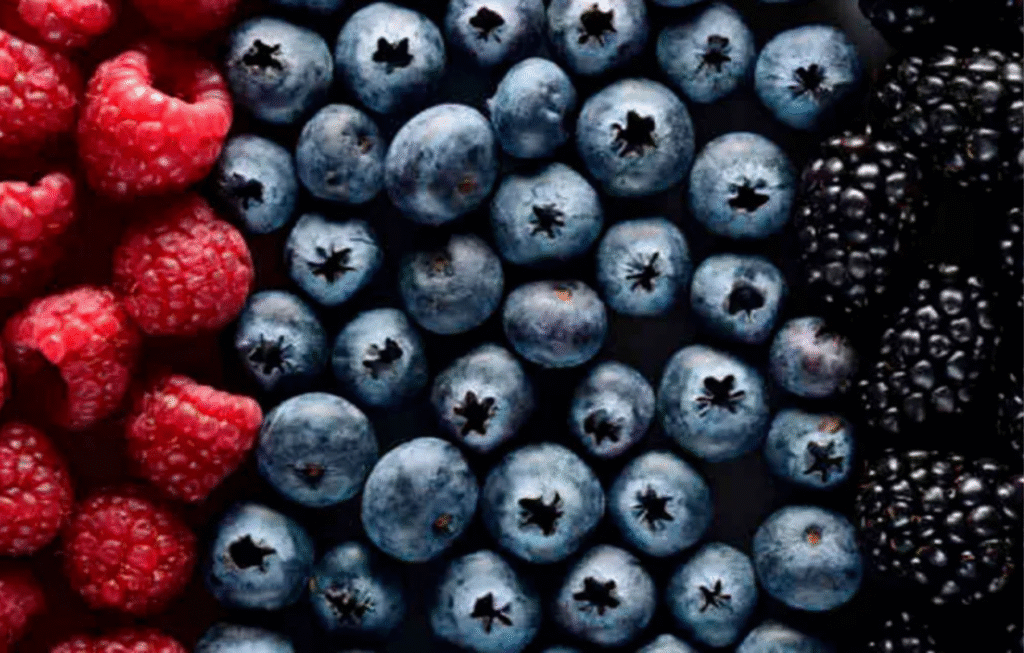
These are rich in fiber, antioxidants, and anthocyanins—pigments associated with metabolic health, decreased oxidative stress, and enhanced insulin sensitivity.
In a fascinating recent human trial, people were given about 350 ml (about 12 ounces) of elderberry juice per day for one week. The outcome was a better gut microbiome mix, a 24% decrease in after-meal glucose, a 9% decrease in insulin, and improved fat oxidation (the burning of fat as energy). This indicates that elderberries can increase metabolism. This was a small, short study, however, so bigger, longer studies are warranted.
You can add sparkling or frozen end result (e.G., blueberries, strawberries) in your eating regimen (yogurt bowls, smoothies, breakfast dishes). For elderberries, make sure you devour them processed or cooked (raw elderberries are poisonous). The fiber in such end result retards digestion, keeping blood sugar stages greater stage and averting insulin spikes all of that can constrain the garage of fat.
5.Protein-Rich Foods (Lean Protein Sources)
Protein digestion takes a lot of energy: this is referred to as the thermic effect of food. Most of the time, 15–30% of the calories in protein are spent digesting and processing it; whereas carbohydrates and fats eat up much less (5–10% or even less). So, if you’re getting sufficient lean protein in your diet, it will assist. If you’re lean, your body will use a bit more energy.
And, protein keeps or builds muscle mass. And the more muscle (lean body mass) you have, the greater your basal metabolism (resting energy expenditure).
Good protein sources: eggs, fowl/turkey, fish, lentils, tofu, tempeh, yogurt, cottage cheese, kidney beans, chickpeas, and many others. Don’t eat all protein right away—unfold it out during the day. And it’s a very good concept to pair protein with fiber and healthy fat for progressed blood sugar manipulate.
6. Nuts and seeds (almonds, flax seeds, chia, walnuts, etc.)
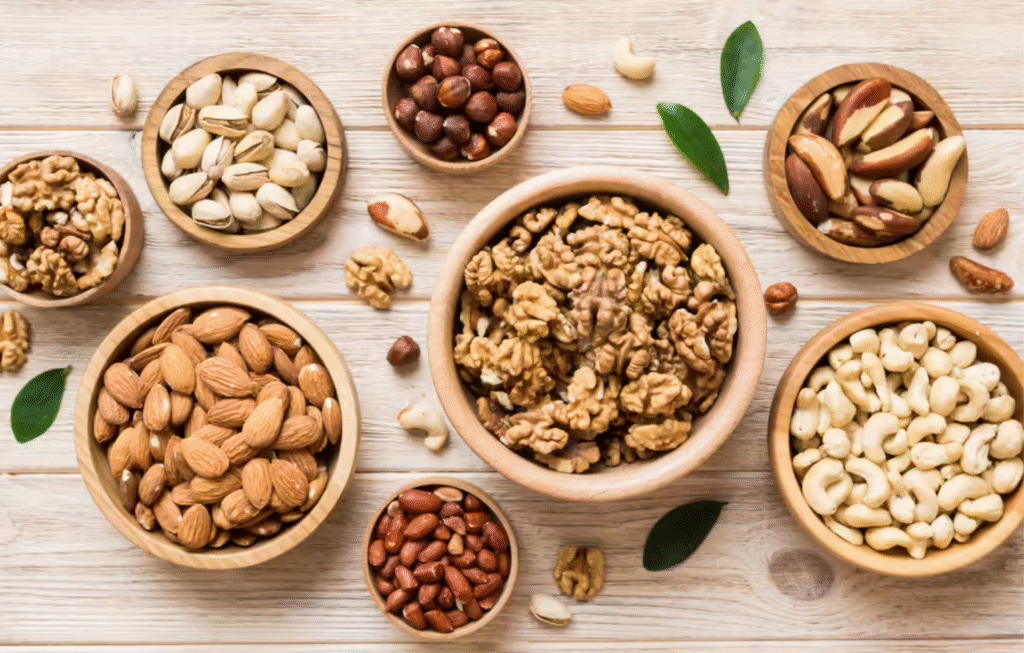
Despite being calorie dense, nuts and seeds bring healthful fat, fiber, protein, and micronutrients—all of which have the capacity to enhance satiety, stage out blood sugar, and sell metabolism. Nuts (particularly almonds and walnuts) have been proven in some research to be greater favorable for weight renovation and could modestly enhance strength expenditure as a result of the lower thermic energy value of digestion.
Flaxseeds and chia are especially good at delivering omega-3 fats, lignans, and fiber. Flaxseeds should be ground because it makes it easier for the body to absorb their nutrients.
However, moderation is the key here—a handful (20–30 grams) or a little sprinkle over meals or snacks to prevent a calorie overload.
7. Green leafy vegetables (spinach, kale, Swiss chard, etc.)
Green leafy vegetables are low in calories however excessive in vitamins, minerals (magnesium, iron, B vitamins), and fiber—all of which might be vital to mitochondrial and energy production features. Even moderate iron deficiency can have an effect on metabolism—for the reason that oxygen transport and mitochondrial function can be impeded.
In addition, these vegetables are high in volume but extremely low in calories—so you can consume more in fewer calories and remain satisfied. Use them lightly cooked or raw in salads, stir-fries, smoothies, wraps (green leaf wraps or lettuce wraps), etc. Vary them to prevent too much oxalate or other plant chemicals.
8. Whole grains and legumes (oats, quinoa, lentils, kidney beans, chickpeas, etc.)
When you consume whole grains and legumes, in comparison to sophisticated grains, they have a higher fiber and resistant starch content material. They take longer to be digested, blood sugar tiers stay stable, and there aren’t any spikes in insulin—the entirety that helps to avert the garage of fats.
In addition to this, these foods are fueling healthy gut microbiota, and these bacteria are engaged in metabolic signaling.
For instance: metal-reduce oats, rolled oats, quinoa, sorghum, millet, various lentils, kidney beans, chickpeas, and many others. Consuming an excessive amount of fiber to begin with can reason digestive problems—so growth the amount steadily. If a person has IBS or other digestive issues, it’s vital to take note of the sort and amount of fiber ate up.
9. Coffee (Caffeine)
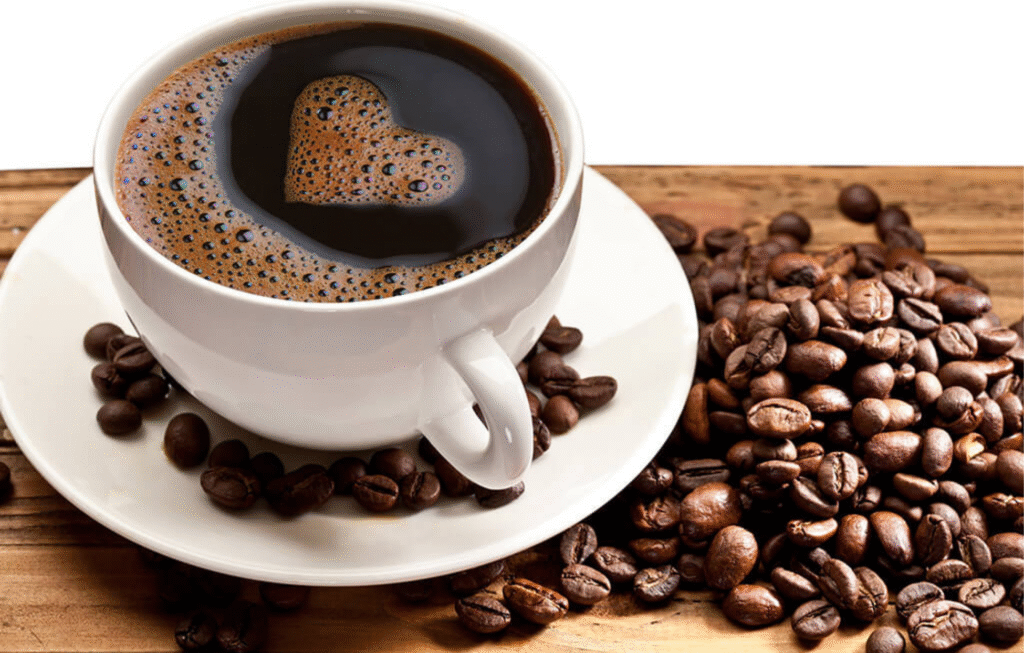
Caffeine is a natural sympathomimetic that stimulates the sympathetic nervous system (raises adrenaline/noradrenaline levels). This makes fat reserves available as energy and modestly raises resting energy expenditure (basal metabolism). A number of studies indicate that pre-exercise coffee consumption enhances fat oxidation during exercise.
But caffeine overconsumption is addictive, which causes restlessness, insomnia, or increased heart rate. But normally, 1–2 cups of coffee (not too sweet nor heavy cream) is fine, and not recommended to drink after the evening so that sleep won’t be disrupted.
10. Medium-Chain Triglycerides (MCTs) / Coconut Oil
MCTs (medium-chain triglycerides) are broken down differently from normal fats (long-chain)—they travel straight to the liver and are quickly metabolized into energy. Some studies indicate that eating a small amount of your fat from MCTs will have a slight effect on increasing energy burn and fullness.
Coconut oil contains naturally some MCTs (though there are mixed chains). More refined MCT oil (C8, C10) can also be found. Place 1–2 tablespoons of it in coffee, smoothies, or lightly cooked food. But keep in mind: these do still contain calories—overdoing it will spoil the benefit. And unexpected spikes can upset your stomach, so begin slowly.
How to Use All These Foods Practically
First, add 2–three superfoods in your ordinary food plan—like inexperienced tea within the morning, berries or nuts for breakfast, lean protein at each meal, and spices consisting of turmeric or chili.
Combining these meals can provide synergistic results—like turmeric and black pepper (piperine) to enhance absorption; combining protein, fiber, and fats can decrease blood sugar peaks; combining caffeine and protein before exercising can enhance burning fat.
Always use whole food sources—not supplements for the most part (other than okayed by a health professional). Consider your overall calorie and nutritional balance—because metabolic advantages just mean that your diet can get better, but if you
FAQs
Does any food literally “burn fat”?
No food actually burns fat, but some might slightly boost metabolism or enhance insulin sensitivity. Their impact is limited and only beneficial within a healthy calorie-restricted diet.
In what way does green tea assist with metabolism?
Green tea has caffeine and EGCG, which can raise energy expenditure by 3–4%. More catechins are delivered with matcha. Effects are small and synergistic when used with exercise.
Does chili or spicy food stimulate fat burning?
Chilies have capsaicin, a thermogenic substance that may moderately boost calorie burn and suppress appetite. It is mild and short-acting, and it works best in combination with other dietary modifications.
Hi, I’m veda, a professional health content writer and passionate wellness advocate at HealthTipsIndia.com
. With years of experience in writing evidence-based, reader-friendly articles, I specialize in creating content that empowers people to live healthier, more balanced lives. Whether it’s nutrition, fitness, natural remedies, or preventive healthcare, I translate complex medical concepts into actionable tips tailored for the Indian lifestyle. My goal? To make trustworthy health information accessible to everyone—one article at a time.

